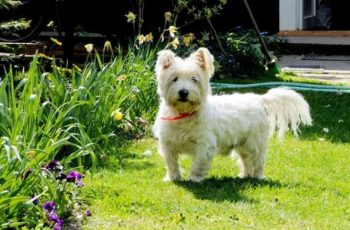
Sometimes we need our dogs to follow tucked up close to us in a heel position, so it’s a valuable skill for your dog to learn. While most often useful for safety, it can also be helpful for foundational work in canine freestyle and other activities. That said, unless you’re training for competition in the obedience ring, save heel for times of need. Dogs shouldn’t be forced to walk in a strict heel for their entire walks. It’s restrictive, boring, and provides little, if any, stimulation for the dog.
Heel is good day-to-day when:
- In a crowded environment
- Crossing the street
- Around unfamiliar children
- Passing other dogs
How to Teach a Dog to Heel
When teaching your dog to heel, start indoors with little to no distractions. Grab some very small but very yummy snacks.
- Ask your dog to sit on your chosen side. Try luring him into position from behind you so he’s facing forward. Use a high rate of reinforcement here: treat handsomely when he reaches the desired position.
- Put the treats behind your back. When your dog isn’t looking at the treat or you, but still sitting beside you, mark and reward.
- Encourage him to follow at your chosen side as you walk around the room (make kissy noises, tap your thigh, etc.). When your dog is at your chosen side, mark and reward.
- When you stop, ask your dog for a sit. Hand signals are helpful here. Mark and reward.
- Once your dog is able to follow along at your side, introduce the verbal cue “heel” or “close” and repeat steps 1 through 4.
- When your dog is responding to the verbal cue, begin to fade the lure, meaning reward intermittently, then randomly.
- Now that your dog is following alongside you, change it up: vary your speed and change direction, all while encouraging your dog to be at your side.
- Finally, practice on-leash inside, then take it to the streets. Start with low-level distractions then work up to busier, noisier environments.
Tips for Teaching a Dog to Heel
- Because heading out into the world presents a challenge, go back to using treats here at first. Fade shortly after.
- If your dog isn’t doing well on one of the steps, don’t keep moving on: hang out there until you’re both ready to proceed.
- Learning takes time: be patient.
- This is a very unnatural ]behavior for dogs (much like leash walking), so cut him some slack and shape the behavior if necessary.


